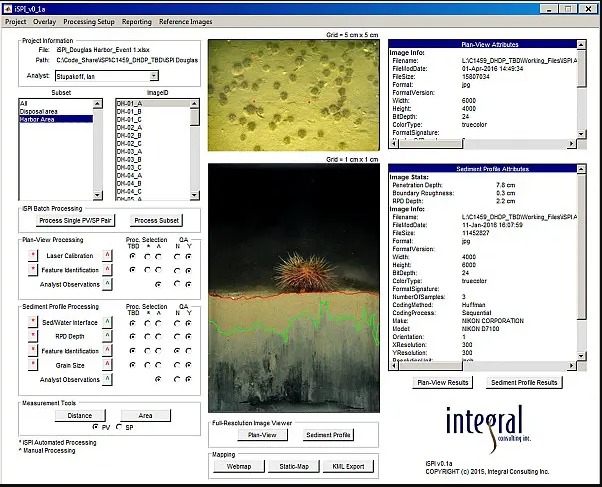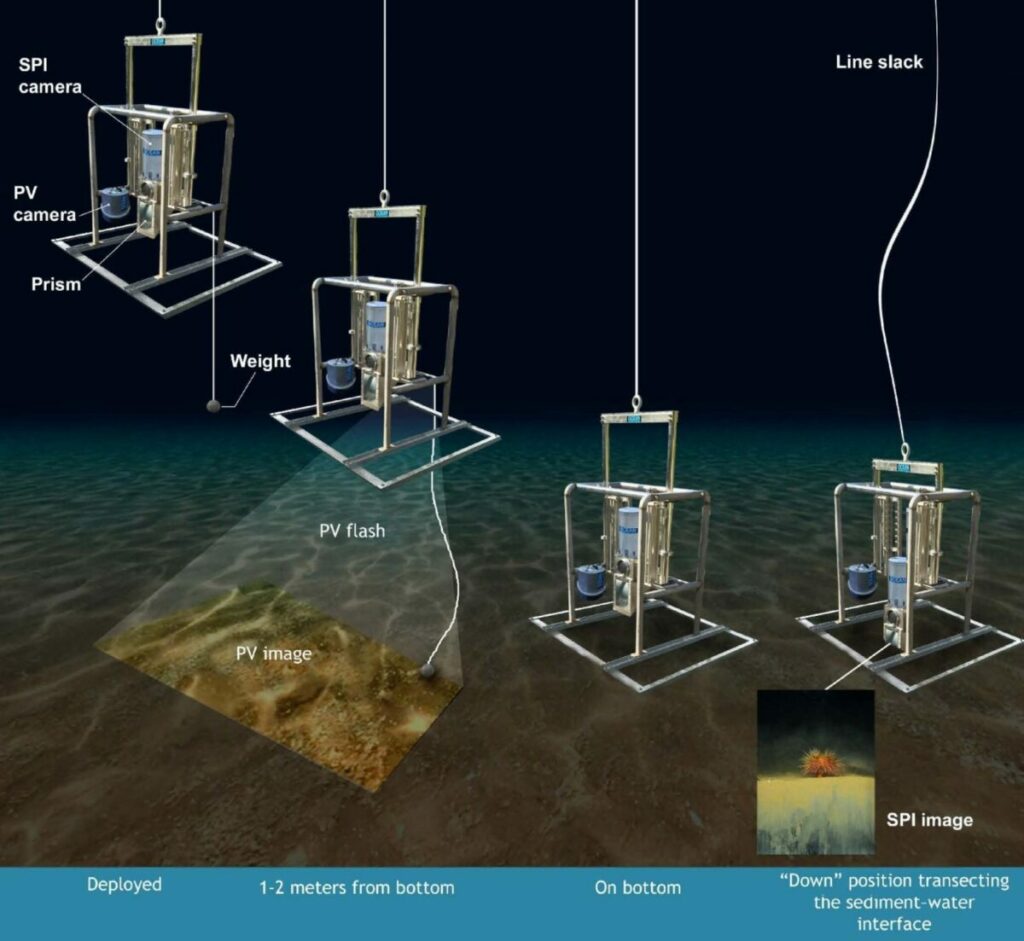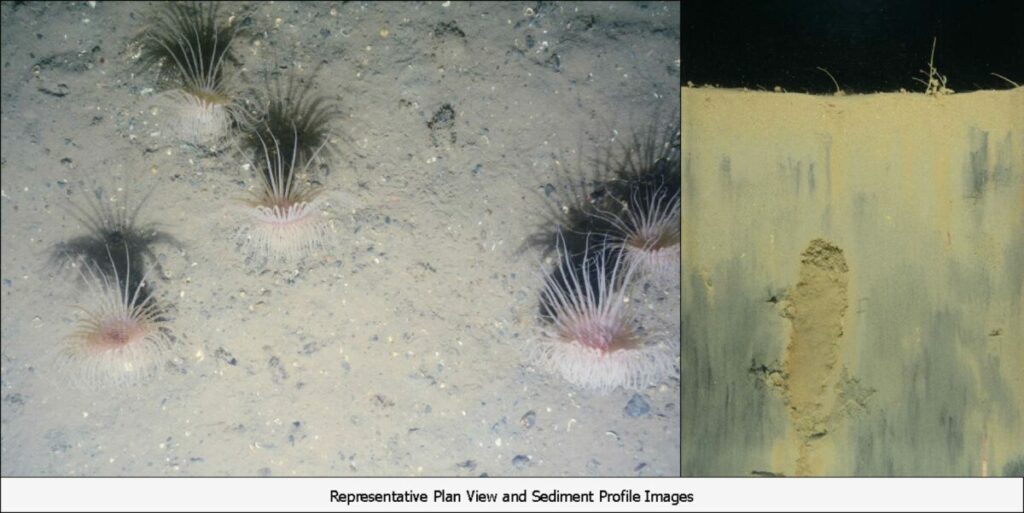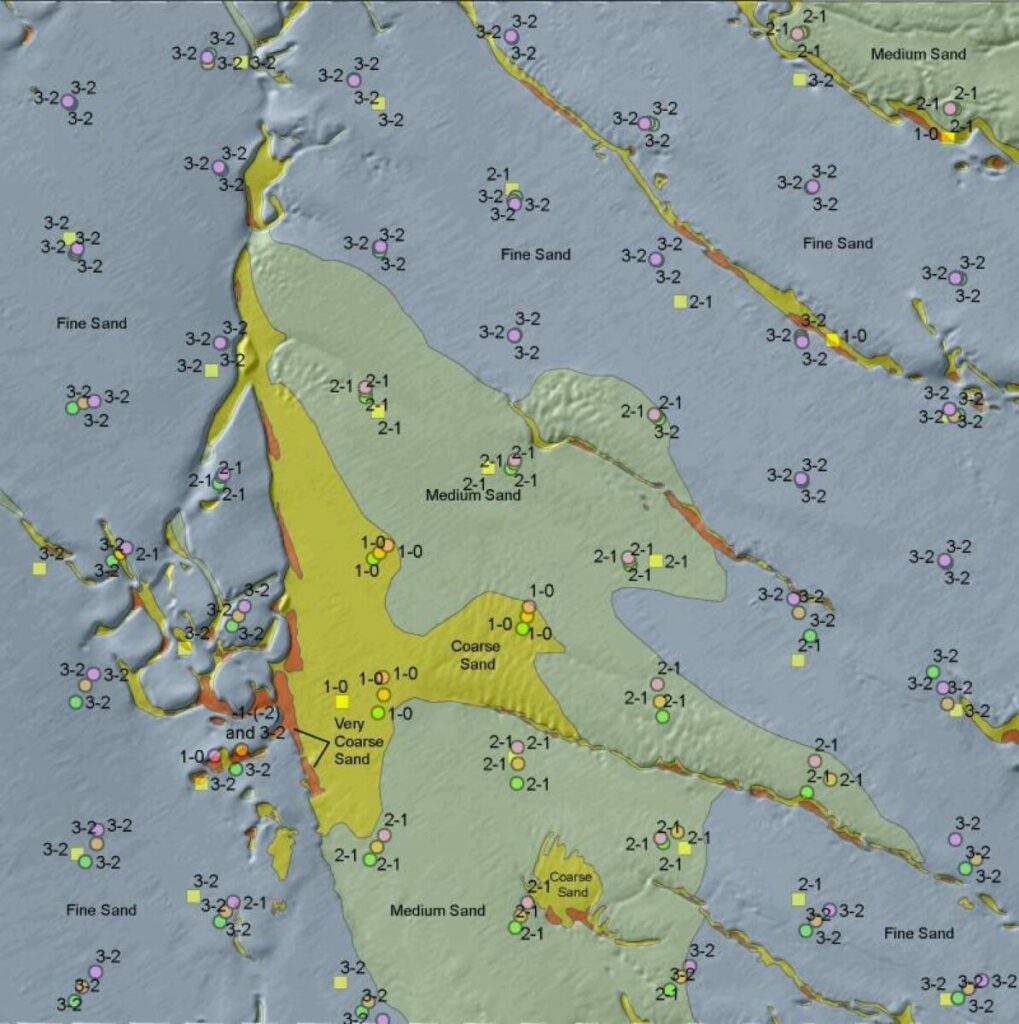Sediment Profile and Plan View Imaging
The SPI-PV System
How It Works

What It Sees
Plan view images collocated with the SPI images provide a landscape view of the seabed and complement the SPI information. The above image shows physical features (grain size, shell lag deposits, anthropogenic disturbance) and biological features (flounder, urchin, hermit crab, and lebensspuren).
Automated Image Analysis
SPI–PV Project Locations
- Dredged material management and contaminated sediments – green
- Benthic habitat quality mapping—light blue
- Offshore wind farm baseline studies—red
- Telecommunications cable surveys—dark blue
SPI Projects
- Baseline Environmental Studies - Offshore Wind Farms
- Benthic Habitat Mapping
- Dredge Material/Contaminated Sediments
- Offshore Oil and Gas Environmental Assessments
- Telecommunications
Selected Projects
Sediment Remediation Monitoring, Kalamazoo River, Michigan
Bottom-feeding activities by fish, such as invasive carp, can disturb surface sediments and impede the natural recovery of contaminated sediments. Carp were removed from a Michigan lake in an effort to to foster natural recovery. SPI technology is a key tool being used to evaluate the success of this novel contaminated sediment management strategy. The SPI camera is being used as a surrogate static-load penetrometer, and relative SPI prism penetration depths across the lake system and over time (pre- and post-carp removal) are being used as a measure of bed consolidation.
For this application, the SPI camera was purposely set up to over-penetrate into the soft sediment bed taking multiple images on descent. These images were then stitched together (blue line) to provide continuous sediment profiles as deep as 32 cm below mudline.
Dredged Material/Contaminated Sediments, Douglas Harbor, Alaska
This time series shows the baseline conditions, the distinct dredged material and cap deposits, and the new fine-grained sediments deposited onto and mixed into the sand cap layer 1 year after construction.
Benthic Habitat Mapping, PacWave Energy Test Site off Newport, Oregon
Baseline Environmental Studies for Offshore Wind Farms, U.S. East Coast
Offshore wind lease areas and export cable routes have been proposed up and down the U.S. east coast. SPI–PV seafloor surveys have become an integral tool in establishing baseline benthic physical and biological conditions at these sites. Geophysical and geotechnical investigations are used to evaluate seafloor conditions to support engineering and hazard assessment. Proponents typically combine multibeam mapping with seafloor imaging to rapidly develop quantitative seafloor maps at detailed spatial scales. To date, Integral has successfully conducted nine baseline SPI–PV surveys for multiple wind farm projects off the East Coast.
Offshore Oil and Gas Environmental Assessments - Gulf of Mexico
As oil and gas sites are abandoned, SPI–PV technology is used to map drilling muds and splays in the vicinity of drilling sites, while also obtaining synoptic data on benthic habitat and physical, geochemical, and biological conditions. Along with the benefit of capturing dense spatial coverage and relatively rapid information return, this capability has made SPI–PV surveys a key tool in this sector. For example, SPI–PV imaging is a monitoring tool required by ASEA (Mexico’s Agency for Safety, Energy, and Environment) for offshore oil and gas activities.
For more information on Integral Consulting and
sediment profile imaging, please contact:




















